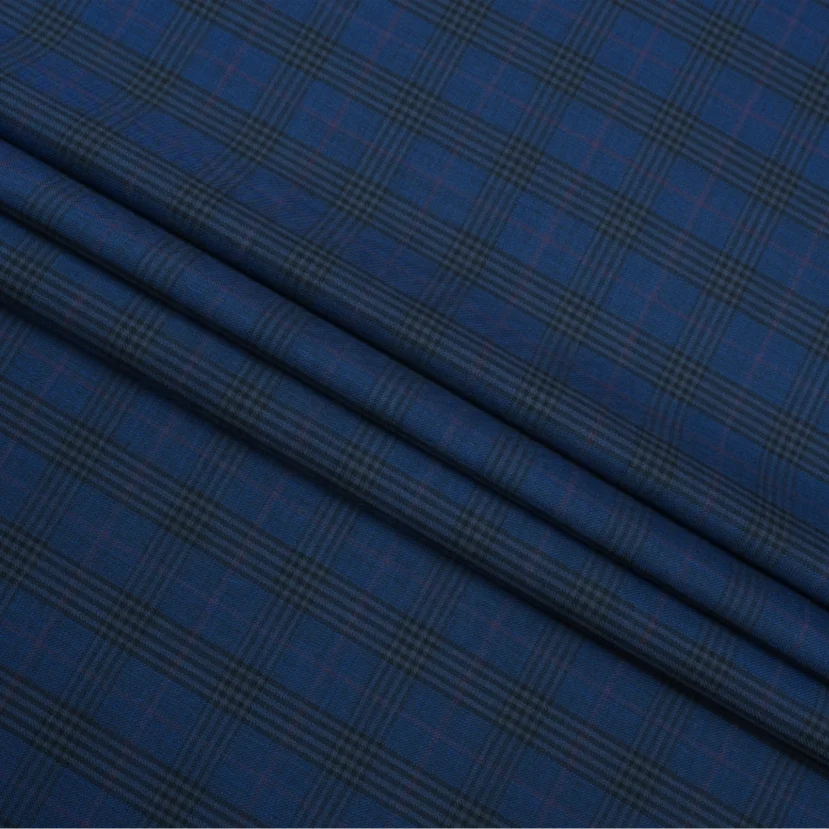Technical Advantages of Wool Blends
Warmth Without Bulk: Thermal Efficiency
Wool blends offer a remarkable advantage in terms of thermal efficiency by effectively trapping more air for insulation compared to pure fibers. This results in enhanced warmth without the added bulk. Research demonstrates that the natural properties of wool allow it to regulate temperature efficiently, leading to greater comfort in different climates. This adaptability ensures wearers remain comfortable whether facing the chill of winter or the heat of summer. Additionally, advancements in moisture-wicking technology enable wool blends to manage sweat effectively, making them an ideal choice for both cold and warm weather apparel.
Durability and Longevity in Garments
One of the most significant benefits of wool blends is their enhanced durability, as they outperform 100% wool products in resisting wear and tear. Studies suggest that fabrics made from blended fibers can effectively extend the lifespan of garments, offering superior value to consumers and contributing to reduced textile waste. Furthermore, wool blends often simplify care by allowing machine washability, which is a highly appealing feature for today's busy lifestyles.
Enhanced Fit and Stretch for Modern Silhouettes
The incorporation of elastane and other stretchable fibers into wool blends has revolutionized garment fit and comfort. These blends provide better stretch, resulting in garments that mold perfectly to the body's natural contours, which enhances both fit and comfort. Many fashion designers have recognized the value of wool blends and are increasingly using them in activewear and formal clothing, catering to a broad spectrum of body types. The versatility of wool blends also aligns well with contemporary styles, making them highly appealing to trend-savvy consumers seeking both comfort and a modern silhouette.
Sustainability in Wool Blend Production
Eco-Friendly Manufacturing Processes
The manufacturing of wool blends is increasingly adopting eco-friendly processes to minimize environmental impact. Techniques such as water recycling and the use of low-impact dyes are now commonly deployed in production facilities. Adhering to certifications like the Global Organic Textile Standard (GOTS) can help verify these practices as industry-reports substantiate these standards. Investments in technology are propelling greener methods, appealing to environmentally conscious consumers who prioritize ethical manufacturing processes in their purchasing decisions.
Recycled Wool and Circular Fashion
Recycling wool fibers has emerged as a pivotal practice in embracing circular fashion trends, offering a reduced environmental footprint. There is significant data showing that utilizing recycled wool fibers effectively lowers raw material costs, promoting environmental stewardship—a key factor in sustainable fashion. Market analyses reveal that consumers increasingly favor brands that incorporate recycled materials, as these choices resonate with individuals keen on sustainable fashion practices.
Reducing Carbon Footprint with Blends
Wool blends present a promising alternative to synthetic options with a reduced carbon footprint, as evident from life cycle assessments. By integrating natural fibers alongside wool, these blends enhance biodegradability, leading to less waste and overall environmental impact. Government initiatives designed to foster sustainable fashion further highlight the role of blend compositions in alleviating climate impact. Wool blends effectively combine ecological benefits with performance, making them an ideal choice for conscientious consumers seeking to reduce their carbon footprint through more sustainable fashion choices.
Suits and Coats: Tailoring Luxury
Wool blends are the choice of many designers when crafting luxury suits and coats, thanks to their refined appearance coupled with inherent comfort. These blends not only cater to the sophisticated aesthetic desired in formal attire but also ensure wearability and resilience. By enhancing the structural integrity of fabrics, wool blends expand the tailoring possibilities for designers, who can create more intricate and elegant patterns. This capability is drawing increasing interest in blended fabrics for formal wear, evidenced by statistics showing a rise in demand for their sophisticated aesthetic and practical functionality. The seamless blend of comfort and style offered by wool blends is making them a staple in luxury tailoring.
All-Season Adaptability in Apparel
Wool blends are celebrated for their ability to adapt across seasons, making them ideal for crafting versatile wardrobes. This year-round functionality caters perfectly to consumer preferences for fabrics that seamlessly transition through temperature fluctuations. Wool blends not only maintain warmth during colder months but are breathable enough for warm weather, a feature that appeals greatly to those seeking practicality in their fashion choices. As expert opinions predict, these blends are likely to dominate all-season markets due to their unique properties and adaptability. Their growing popularity is indicative of market trends that favor fabrics offering both versatility and style.
Creative Textures in Skirts and Winterwear
The world of skirts and winterwear is experiencing a creative renaissance, thanks to innovative blending techniques involving wool blends. Designers are utilizing diverse fabrics to craft unique textures that appeal to fashion enthusiasts looking for individuality in their clothing. This pursuit of creativity has led to partnerships across markets and trends, expanding opportunities for innovation. Market research data supports this transformation, showing a positive correlation between texture innovation and consumer buying habits, which underscores the demand for distinctive and novel fashion elements in winter attire. This evolution in design is reshaping consumer expectations and energizing the fashion market with fresh possibilities.
Blending Techniques and Aesthetic Innovation
Combining Wool with Synthetics and Natural Fibers
Combining wool with synthetic fibers significantly enhances the durability and protection of the fabric, allowing for functional use in adverse weather conditions. These blends offer a perfect solution for outdoor apparel where resilience is critical. Adding natural fibers such as cotton and linen to wool blends improves breathability, making them versatile for various applications from clothing to home textiles. Research reveals that blended fabrics are increasingly favored due to their ability to meet both practical and aesthetic consumer demands, highlighting their potential in the textile industry.

Texture Play for Fashion-Forward Styles
The creative melding of different fibers allows for texture play that impacts fashion aesthetics, catering to modern styles and tastes. This textural innovation can add depth and visual interest to garments, elevating them above standard designs. Wool blends have become a staple in fashion shows, a testament to their public acceptance and trendsetting clout. Expert designers have noticed increased consumer engagement with garments that feature unique textures, proving the appeal of such design innovations.
Case Study: NOBILITY SUITINGS’ Blend Collections
NOBILITY SUITINGS has set a benchmark in the industry by successfully implementing diverse blends that capitalize on luxury and performance attributes. Customer feedback consistently highlights satisfaction with the reliability and quality of these wool blend suits in professional settings, attesting to their excellence. Market research underscores the competitive advantage of NOBILITY SUITINGS due to their innovative approach to blended materials, propelling their collections to outperform rivals in the industry. For more information about their blend collections, you can visit the NOBILITY SUITINGS' website.
Future Trends in Wool Blend Applications
Smart Textiles and Performance Wear
The future of wool blends is set to embrace smart textiles, enhancing the functionality of fabrics with capabilities like temperature regulation and moisture management. This innovation is expected to revolutionize performance wear, as early-stage studies suggest an increasing consumer demand for high-tech fabrics. Leading brands are capitalizing on this trend by investing significantly in R&D, aiming to develop advanced wool blend products that align with emerging fashion demands and technological advancements.
Market Growth and Consumer Demand
The market for wool blend fabrics is poised for substantial growth, driven primarily by consumer preferences favoring sustainability and comfort. Industry insiders have reported a discernible shift in consumer attitudes, with more individuals opting for blended fabrics rather than conventional textile choices. Supporting data from analysts indicates a consistent rise in sales within the wool blends segment, validating these consumer trends and providing promising prospects for the textile market.
Alpaca and Merino Hybrid Innovations
Hybrid innovations like alpaca and merino blends are gaining traction due to their luxurious feel and superior thermal properties. Case studies examining these blends highlight their rising popularity among consumers who prioritize both comfort and style. Market analysis corroborates these findings, illustrating lucrative opportunities for retailers who incorporate alpaca-merino hybrid fabrics into their offerings, positioning them well within the textile market's competitive landscape.
FAQ
What are the benefits of wool blends over 100% wool?
Wool blends offer enhanced durability, thermal efficiency, and better fit thanks to the inclusion of synthetic and natural fibers. They also provide easier care options, such as machine washability.
How do wool blends contribute to sustainability?
Wool blends incorporate eco-friendly practices in their production, use recycled fibers, and reduce carbon footprints, contributing to sustainable fashion.
Why are wool blends popular in luxury tailoring?
Wool blends combine elegance with comfort, enhancing the structural integrity and wearability of luxury suits and coats, making them a favorite among designers.
Can wool blends be worn in all seasons?
Yes, wool blends are versatile enough to maintain warmth in cold weather while being breathable for warmer climates, making them suitable for year-round wear.
What future trends are expected for wool blends?
Future trends include the integration of smart textiles, expanding market growth, and innovations like alpaca-merino hybrids which enhance thermal properties and comfort.

